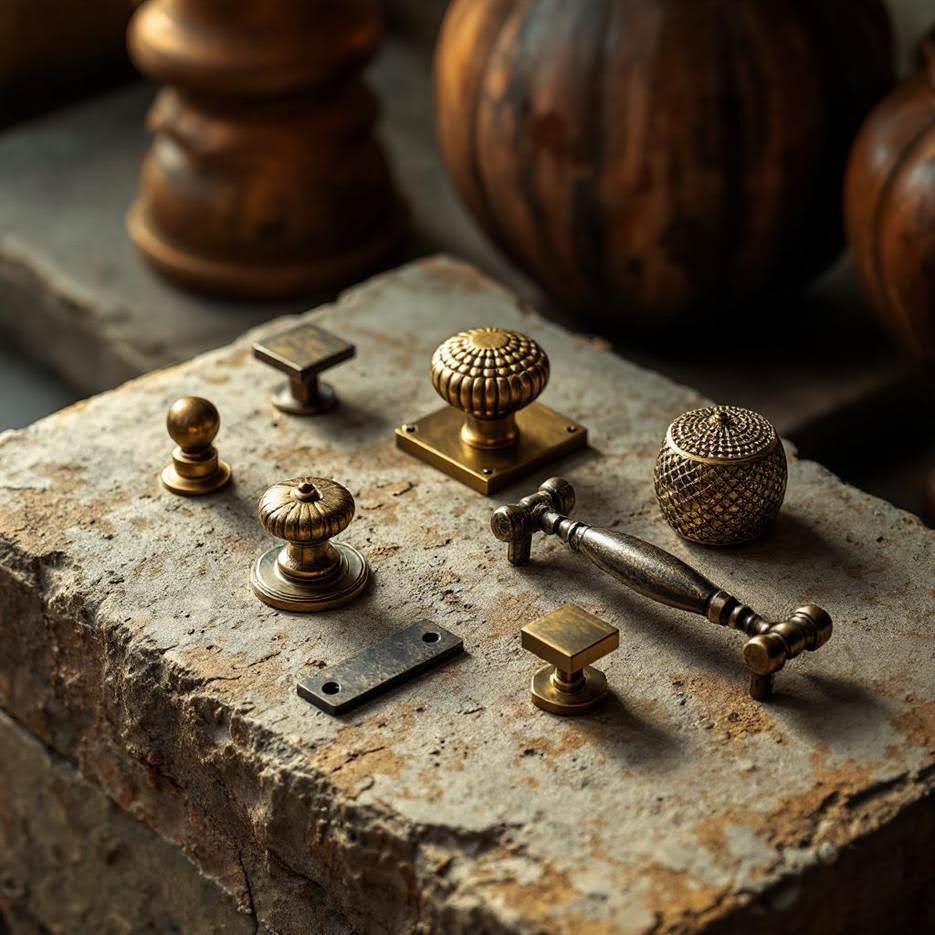Phone:
(701)814-6992
Physical address:
6296 Donnelly Plaza
Ratkeville, Bahamas.

Hardware selection is a key detail in home design. These small elements, from doorknobs to cabinet pulls, create a unified look. Choosing the right finishes can feel like a challenge. Many homeowners appreciate the quality of brands like Rocky Mountain Hardware. The process of coordinating different finishes, however, can seem complicated.
This guide provides a straightforward method for selecting and combining hardware finishes throughout your home.
Metal finishes fall into three primary color categories. Understanding these tones helps you make intentional design choices. Each group offers a distinct feeling and style.
Warm tones create an inviting atmosphere. These finishes include gold, brass, copper, and oil-rubbed bronze. They work well in traditional or classic designs. They often feature in spaces designed for comfort, like a traditional kitchen or a cozy den.
Cool tones provide a crisp, modern look. This group contains chrome, polished nickel, and stainless steel. These metals complement contemporary and minimalist spaces. These finishes support a feeling of cleanliness and efficiency in modern bathrooms and kitchens.
Neutral tones offer great versatility. Matte black and iron are the most common neutral finishes. They act as grounding elements and pair easily with both warm and cool metals. They can ground a minimalist design or provide an industrial edge to a space.
Select one primary finish to use consistently throughout your home. This dominant metal creates a sense of continuity. It connects different rooms and builds a visual foundation. This approach is the most effective way to ensure your home feels harmonious rather than chaotic.
Door hardware is an excellent place to establish your dominant finish. For example, you might use satin brass on all interior door levers and hinges. This simple strategy creates visual consistency. The primary finish does not need to be the most prominent, but it should appear in every space. This repetition makes the whole design feel complete.
To select your dominant finish, look at your home’s most permanent elements. Consider the metal on your window frames, the style of your main light fixtures, or the home’s overall architecture. A modern home might call for a cool or neutral dominant metal, while a classic house may suit a warm one. This decision anchors all your future hardware choices.
Mixing metal finishes adds depth and visual interest to a room. A clear plan prevents the space from looking accidental. You can combine metals confidently by following a few simple principles. The goal is to create a mix that looks deliberate and curated.
You can successfully pair warm, calm, and neutral finishes. The contrast should appear purposeful. For instance, matte black faucets look striking against brass cabinet pulls in a kitchen.

A neutral finish, such as black, often acts as a bridge between warm and cool metals. This technique creates a layered, sophisticated design. Another successful pairing is polished nickel with oil-rubbed bronze for a classic, high-contrast effect.
Another approach involves using one metal in various textures. Many finishes come in polished, brushed, satin, or matte versions. This method adds subtle complexity without introducing a new color.
For example, you could pair a polished chrome faucet with satin chrome cabinet hardware. The shared material ensures harmony, while the different textures provide a quiet contrast.
Limit the number of metal finishes in any single room. A good rule is to use two or three different metals. This prevents visual clutter and maintains a sense of order. Using more than three finishes can confuse the eye and make it difficult to appreciate any single element.
A typical combination includes one dominant metal, one secondary or accent metal, and sometimes a third for minor elements. For example, a kitchen might feature stainless steel appliances, black cabinet pulls, and a single brass light fixture over the island. This balanced approach feels both dynamic and cohesive.
Different rooms present unique opportunities for combining hardware and software. A room’s function often helps guide your finish choices.
In the kitchen, appliances frequently set the tone. Stainless steel appliances create a sleek, modern finish. You can then introduce a warm accent, like bronze pulls, on the cabinetry. The faucet can match either the appliances or the hardware for a complete look.
Bathrooms offer a more contained space to mix metals. The faucet, shower trim, and towel bars should usually share the same finish. This creates a clean, uncluttered foundation. You can introduce a second finish on the light fixtures, mirror frame, and vanity hardware.
A successful bathroom combination could be:
● Primary Finish: Polished Nickel (faucet, showerhead, towel bar)
● Accent Finish: Matte Black (vanity lights, mirror frame, cabinet knobs)
You can apply these ideas to other areas too. In an entryway, the front door hardware makes the first impression. Match this with the overhead light fixture. A nearby console table or coat rack provides another opportunity to introduce your chosen accent finish. This creates a welcoming and stylish entry point to your home.
Selecting hardware finishes is an important part of your home’s design. The process becomes simple with a structured approach.
First, understand the basic metal tones. Next, choose a dominant finish to create consistency. Finally, mix a limited number of accent finishes with a clear strategy. This method helps you make a home that looks polished, cohesive, and thoughtfully designed.